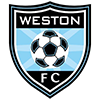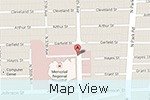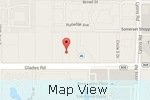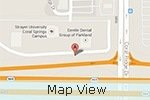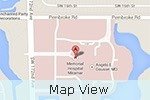Cerebral palsy
Cerebral palsy (CP) is a group of neurological disorders that affect movement, muscle tone, and coordination skills. CP is usually caused by brain damage that occurs before or during the child’s birth, or during the first 2-3 years of life.
Brain damage can also impair motor skills such as vision, hearing, speech, and learning. Simple activities such as standing, sitting becomes difficult for the child.
Types of Cerebral palsy:
Cerebral palsy is one of the most common congenital neurological disorders. Different types of cerebral palsy are as follows
- Spastic CP characterized by muscle stiffness and movement difficulties.
- Dyskinetic CP affects coordination of movements. There are two subtypes:
- Athetoid is described by slow and uncontrolled movements.
- Ataxic type affects balance and coordination.
- Mixed CP is a mixture of several types of cerebral palsy.
Causes of cerebral palsy:
The exact cause of cerebral palsy is not known. However, the causes include:
- Cerebral palsy results from damage to certain parts of the brain during the birth process or the first two years of developing phase of the child’s life.
- Fetal brain damage because of infections during pregnancy.
- Birth injuries during delivery.
- Head injury following an accident/fall
- Abusive head trauma, also known as shaken baby syndrome caused by direct blows to the head, dropping/throwing/shaking a child.
- Very high bilirubin levels (jaundice)
- Low oxygen levels (hypoxia)
Signs and symptoms:
The early signs and symptoms of cerebral palsy include:
- Delayed developmental mile stones such as head control, roll-over, sitting, crawling and walking in infants.
- Infantile reflexes such as sucking reflex and startle reflex, which otherwise usually disappears within 3-6 months, may persist for a long time.
- Excessive muscle stiffness with jerky or abrupt body movements.
- Joints may become very stiff because of differing levels of pressure exerted on them by muscle of different tones.
- Seizures may occur in early years with some cases of cerebral palsy.
- Unclear speech in some children as they are unable to control the muscles which aid in speech.
- Drooling of saliva and difficulty in swallowing may be seen.
- Delayed or no response to sound.
- Speech may be delayed
- Tooth decay because of defective tooth enamel and difficulty in maintaining good oral hygiene.
- Bowel and/or bladder control may be difficult because of lack of muscle control.
Diagnosis:
If a child has any signs and symptoms that suggest cerebral palsy, then a thorough medical evaluation is necessary by the doctor. The diagnosis of cerebral palsy is made based on the information obtained from the family medical history, mother’s medical problems prior and during pregnancy, history of type of pregnancy, labor, and complications. Some tests may be ordered by your doctor:
- Laboratory investigations: Blood and urine tests may be ordered to check for any hormonal and metabolic conditions. DNA testing and chromosomal analysis may be done to rule out genetic disorders.
- Brain ultrasound to detect any abnormality such as bleeding or brain damage.
- CT scan of brain shows a greater detail of the brain structures to detect malformations, hemorrhage, and other abnormalities.
- MRI of the brain may be ordered in children with spasticity of the legs and lack of bladder and bowel control.
Additional neurological tests may be required:
- Electroencephalography (EEG): This test is done to detect the types of seizures.
- Electromyography (EMG) and Nerve conduction studies (NCS): These tests help to rule out other nerve and muscle disorders.
Treatment:
There is no cure for cerebral palsy. The goal of treatment is to reduce the disabilities associated with cerebral palsy.
Conservative treatment:
- Rehabilitation: A rehab program includes physical therapy, use of special equipment, and treatment for spasticity.
- Physical therapy: It involves stretching exercises, and other activities that can develop flexibility and strengthen the muscles. It also helps to develop skills such as holding the head up, sitting unsupported, or walking. Use of braces, splints, and casts may be recommended.
- Special equipment such as walkers, positioning devices, and wheelchairs help to improve function in individuals with CP.
- Spasticity may be treated by oral medications or by injections into the muscles.
- Occupational therapy helps teach physical skills necessary to function independently in daily life activities such as eating, dressing, and others.
- Speech/language therapy: This type of therapy improves speech and overcome problems of communication. It also benefits children with hearing loss.
- Drug therapy: the purpose is to reduce the effects of CP and prevent complications. Medicines prescribed to reduce spasticity and prevent seizures include:
- Dopaminergic drugs: These medications increase the level of a chemical in brain called dopamine.
- Muscle relaxant relaxes the muscles thereby reducing the spasticity.
- Benzodiazepines: These act as muscle relaxants.
- Botulinum toxin A are prescribed to decrease spasticity of hands or legs muscles, thereby improving mobility.
- Anticonvulsants help to stop seizures and prevent their recurrence.
Surgical treatment:
The following are the options:
- Dorsal rhizotomy: In this procedure, a few spinal nerves are cut at their roots where they branch out form the spinal cord. This helps to reduce spasticity and improve muscle movements.
- Implantation of a baclofen pump: The muscle relaxant drug-baclofen helps to reduce spasticity and is best when administered continuously. A tiny pump is placed in the abdominal wall which releases a small continuous dose to decrease the limb muscle spasticity.
- Tenotomy is a tendon-lengthening surgical procedure performed to treat severe spasticity.
Prevention:
Some of the common causes of CP which include premature birth, low birth weight, infections, and head injuries can be prevented include with the following preventive measures:
- Prenatal care with regular follow-ups helps to maintain a healthy pregnancy.
- Avoid smoking, alcohol, and medication intake during pregnancy as these increases the risk of pre-term delivery.
- Rubella (measles) vaccination during pregnancy protects both mother and baby from the risk of developing CP.
- Routine immunizations of the child facilitate prevent infections such as meningitis that can cause cerebral palsy.
- Make sure the child is properly seated with belt in the car or wear a helmet during a bicycle ride.
-
Personalized Physical Therapy Puts Bryant Back on the Court
Bryant could hear the whistles blowing as he walked by the gymnasium.
View more -
No off-season for sports injuries
As a new season of school sports and youth leagues gets underway,
View more -
Student Athletes Benefit from Individualized Treatment at U18 Sports Medicine
Becoming involved in a sport is one of the healthiest things that a child can do.
View more -
For young athletes, injuries need special care
More programs are using procedures and surgical techniques tailored for kids.
View more -
Dr Frank u18 Tip 1
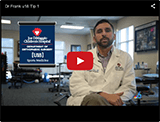 View more
View more -
Segment U18 Tip with Dr Frank 1
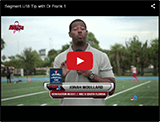 View more
View more -
Dr. Frank’s 2010 WQAM high school football game halftime interviews
View more

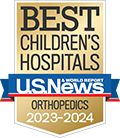


 Menu
Menu






 In The News
In The News Hollywood Office
Hollywood Office

![[U18] Sports Medicine](https://www.kidbones.net/wp-content/themes/ypo-theme/images/u18-sports-medicine-performing-arts-logo.png)
